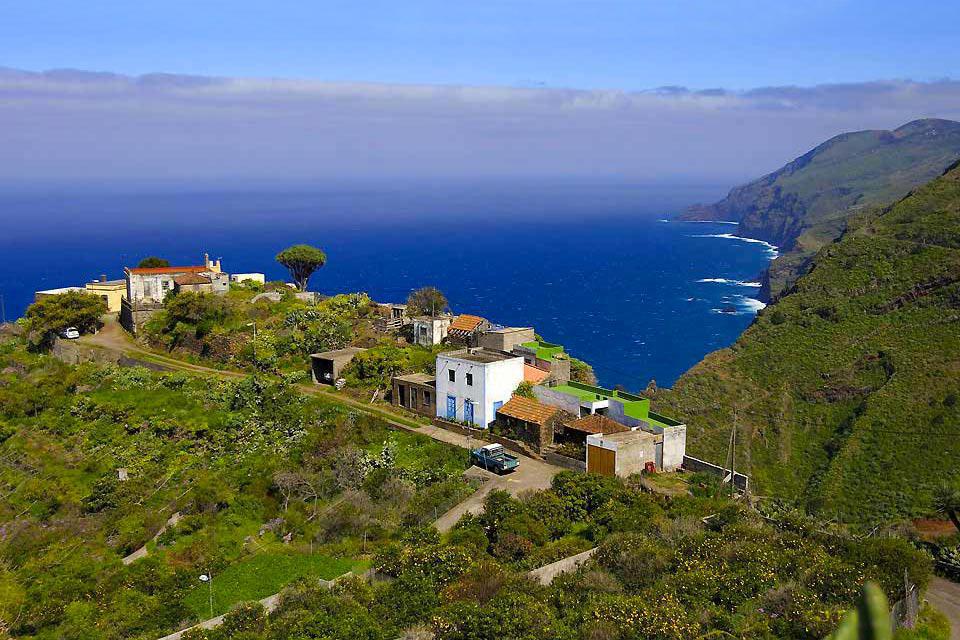

Please help to create a more balanced presentation. This section may lend undue weight to certain ideas, incidents, or controversies. The volcano started erupting again on 19th September 2021 after a seismic crisis rocked the island. 1949 Volcán Nambroque at the Duraznero, Hoyo Negro and Llano del Banco vents.Since the Spanish have kept records, there have been eight eruptions – all of which have occurred on the Cumbre Vieja: Erosion has since exposed part of the seamount in the northern sector of the Caldera. About a half a million years ago, the Taburiente volcano collapsed with a giant landslide, forming the Caldera de Taburiente. Its base lies almost 4,000 m (13,123 ft) below sea level and reaches a height of 2,426 m (7,959 ft) above sea level. La Palma is currently, along with Tenerife, the most volcanically active of the Canary Islands and was formed three to four million years ago. Like all of the Canary Islands, La Palma originally formed as a seamount through submarine volcanic activity.

Beyond Punta de Fuencaliente at the southern tip of the island, the Cumbre Vieja continues in a southerly direction as a submarine volcano. The Cumbre Vieja is active, currently erupting in the 2021 La Palma eruption, which destroyed more than 2600 buildings and caused one death. Today, only a few of these carry water due to the many water tunnels that have been cut into the island's structure.įrom the Caldera de Taburiente to the south runs the ridge Cumbre Nueva ('New Ridge', which despite its name is older than the Cumbre Vieja, 'Old Ridge.') The southern part of La Palma consists of the Cumbre Vieja, a volcanic ridge formed by numerous volcanic cones built of lava and scoria. The outer slopes are cut by numerous gorges which run from 2,000 m (6,562 ft) down to the sea. Only the deep Barranco de las Angustias ("Ravine of Anxiety") ravine leads into the inner area of the caldera, which is a national park. On its northern side is the exposed remains of the original seamount. It is surrounded by a ring of mountains ranging from 1,600 m (5,249 ft) to 2,400 m (7,874 ft) in height. The northern part of La Palma is dominated by the Caldera de Taburiente, with a width of 9 km (6 mi) and a depth of 1,500 m (4,921 ft). The highest peaks reach over 2,400 m (7,874 ft) above sea level, and the base of the island is located almost 4,000 m (13,123 ft) below sea level. La Palma's geography is a result of the volcanic formation of the island.

This is the site of the Roque de los Muchachos Observatory, one of the world's premier astronomical observatories. There is road access from sea level to the summit at 2,426 m (7,959 ft), which is marked by an outcrop of rocks called Los Muchachos ("The Lads"). The volcano rises almost 7 km (4 mi) above the floor of the Atlantic Ocean. La Palma, like the other islands of the Canary Island archipelago, is a volcanic ocean island. In the center of the island is the Caldera de Taburiente National Park one of four national parks in the Canary Islands. It was as a result of his visit to Tenerife, where he visited the Las Cañadas caldera, and then later to La Palma, where he visited the Taburiente caldera, that the Spanish word for cauldron or large cooking pot – " caldera" – was introduced into the geological vocabulary. In 1815, the German geologist Leopold von Buch visited the Canary Islands. Its highest mountain is the Roque de los Muchachos, at 2,423 metres (7,949 ft), being second among the peaks of the Canaries only to the peaks of the Teide massif on Tenerife. The total population at the end of 2020 was 85,840, of which 15,716 lived in the capital, Santa Cruz de La Palma and about 20,467 in Los Llanos de Aridane. La Palma has an area of 708 square kilometres (273 sq mi) making it the fifth largest of the eight main Canary Islands. La Palma ( Spanish pronunciation:, locally ), also known as La isla bonita (English: The Beautiful Island) and officially San Miguel de La Palma, is the most north-westerly island of the Canary Islands, Spain.


 0 kommentar(er)
0 kommentar(er)
